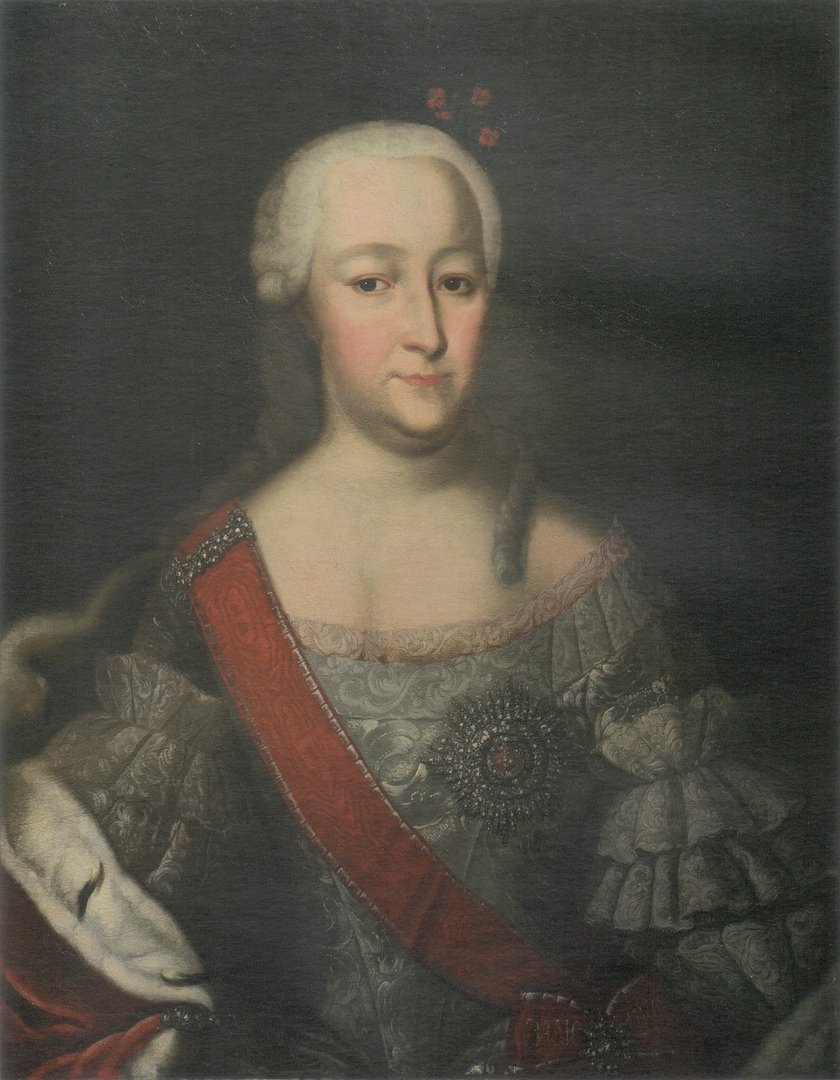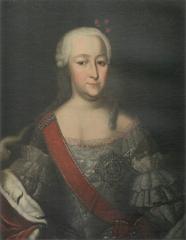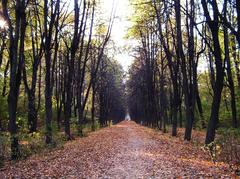
Kuskovo Estate: Complete Guide to Visiting Hours, Tickets, and Historical Significance in Moscow
Date: 14/06/2025
Introduction
Kuskovo Estate, nestled in Moscow’s eastern district, stands as a remarkable testament to Russia’s 18th-century aristocratic culture and architectural achievement. Once the lavish summer residence of the Sheremetev family—one of Russia’s wealthiest and most influential noble dynasties—the estate is celebrated for its harmonious blend of Baroque and Neoclassical architecture, extensive French gardens, and its important role in fostering the cultural and social life of the Russian elite. Today, Kuskovo is not only a preserved historical site but also a vibrant museum complex, home to the State Museum of Ceramics and a center for cultural events in modern Moscow. This guide provides a comprehensive overview of Kuskovo’s history, architectural highlights, collection, practical visitor information, and tips for making the most of your visit (Adequate Travel, mytour.vn, Wikipedia, Advantour, Wanderlog).
Historical Overview
Origins and Development
Kuskovo’s origins trace back to the early 18th century when the Sheremetev family acquired the land. Under the vision of Count Pyotr Borisovich Sheremetev and later his son Count Nikolai Petrovich Sheremetev, Kuskovo was transformed into a grand summer residence and cultural hub. Designed as a venue for elaborate festivities and artistic patronage, the estate quickly became a symbol of the Sheremetevs’ status and Enlightenment-inspired ambitions (Adequate Travel).
Architectural Significance
Kuskovo is an outstanding example of late Baroque and early Neoclassical architecture in Russia. The wooden palace (Grand House), completed in 1775, features elegant façades, interconnected enfilade rooms, and refined stucco work. The surrounding estate is dotted with unique pavilions—including the shell-adorned Grotto, the Dutch and Italian Houses (inspired by Western European models), and the Hermitage—each reflecting the cosmopolitan tastes of the Russian nobility. The palace and pavilions are set within an expansive French formal garden, modeled after Versailles, with geometric parterres, sculptures, and reflecting ponds (mytour.vn, Wikipedia).
Cultural and Artistic Heritage
At its zenith, Kuskovo was a center for music, theater, and the decorative arts. The estate’s private serf theater, established by Count Nikolai Sheremetev, played a significant role in the development of Russian performing arts. Today, the State Museum of Ceramics, located on the estate, houses a world-class collection of over 30,000 pieces of Russian and European ceramics and glass (en.everaoh.com). The estate’s collection also includes period furniture, paintings, and decorative arts that reflect the evolving tastes of the Russian elite.
Kuskovo in the Soviet Era and Modern Day
After the Russian Revolution, Kuskovo was nationalized and became a public museum in 1919. Restoration efforts throughout the 20th and 21st centuries have preserved both its architecture and collections, ensuring Kuskovo’s role as a living monument to Russian history and culture (Advantour).
Essential Visitor Information
Location and Getting There
Kuskovo Estate is located at Yunosti Street, 2, Moscow, Russia, 111402, approximately 12 kilometers east of Moscow’s city center.
- Metro: Nearest stations are Ryazansky Prospekt and Novogireevo, with connecting buses or taxis to the entrance.
- By Car: Parking is available but limited, especially on weekends and holidays.
- Public Transport: Multiple bus routes from central Moscow serve the estate (Wanderlog).
Visiting Hours
- Park Grounds: Typically open from 10:00 to 20:00.
- Palace and Museum Buildings: Generally open from 10:00 to 18:00; last entry at 17:30.
- Closed: Mondays and select public holidays.
- Tip: Always check the official website for the latest updates on hours and temporary closures.
Tickets and Admission
- Park Entry: Usually free.
- Museum Buildings: Standard adult tickets range from 400 to 700 RUB. Discounted rates for students, children, and seniors. Combination tickets available for access to multiple buildings.
- Ticket Purchase: Buy at the entrance or online via the official portal.
- Guided Tours: Offered in Russian and English for an additional fee; advance booking recommended.
Accessibility
- The estate is largely flat and walkable, with wheelchair access to most outdoor areas and select buildings. Some historic interiors may have limited access due to preservation requirements. Wheelchairs are available upon request at the entrance.
- Family Friendly: Open spaces, educational programs, and workshops are available for children and families.
Visitor Amenities
- Dining: On-site cafes and kiosks offer refreshments; picnic areas are available.
- Restrooms: Located near the main entrance and throughout the estate.
- Gift Shop: Sells souvenirs, books, and crafts.
- Audio Guides: Available in multiple languages.
- Photography: Permitted in most outdoor areas; flash and tripods are not allowed inside historic interiors.
Highlights of the Estate
The Palace (Grand House)
The wooden palace is the focal point of Kuskovo Estate, showcasing original 18th-century interiors, gilded stucco, parquet floors, and period artwork. The enfilade layout and pastel-colored façade reflect the shift from Baroque to Neoclassicism (moscow.info, turisticum.ru).
The Grotto Pavilion
A Baroque gem, the Grotto is lavishly decorated with shells, glass, and marble, creating a fantastical atmosphere. It houses exhibitions on decorative arts and 18th-century Russian craftsmanship.
The French Formal and English Gardens
The meticulously landscaped French garden features geometric designs, statues, and ornamental ponds, while the English garden offers a more naturalistic setting with winding paths and groves (mytour.vn).
The Dutch, Italian, and Other Pavilions
Each pavilion reflects European influences and the cosmopolitan tastes of the Sheremetevs. The Dutch House features Delft tiles and period furnishings; the Italian House is designed for art exhibitions and social gatherings. The Orangerie and Hermitage further enrich the estate’s architectural diversity (en.everaoh.com).
The State Museum of Ceramics
Home to one of the world’s largest collections of ceramics and glass, the museum’s highlights include masterpieces from the Imperial Porcelain Factory, Meissen, Sèvres, and Wedgwood. Exhibition spaces are integrated across the estate’s historic buildings.
Events and Activities
- Concerts and Festivals: Kuskovo hosts classical music performances, art exhibitions, and seasonal festivals, especially during summer.
- Workshops: Painting, pottery, and gardening workshops are available on select weekends (advance registration required).
- Family Programs: Educational tours and interactive activities cater to visitors of all ages.
Practical Tips for Visitors
- Best Time to Visit: Late spring to early autumn for garden blooms and outdoor events; weekdays are less crowded.
- Weather: Summer is mild (20–25°C); winters are cold and snowy.
- Attire: Comfortable shoes and weather-appropriate clothing are recommended.
- Language: English-speaking guides and materials are available, though most signage is in Russian.
- Safety: The estate is safe, but keep personal belongings secure.
Frequently Asked Questions (FAQ)
Q: What are the Kuskovo Estate visiting hours?
A: Park grounds are open from 10:00 to 20:00; palace and museum buildings from 10:00 to 18:00. Closed Mondays.
Q: How much do tickets cost?
A: Standard adult tickets for main museum buildings range from 400–700 RUB. Combination tickets and discounts are available.
Q: Is Kuskovo Estate wheelchair accessible?
A: Most outdoor areas and select buildings are accessible; some interiors have limited access.
Q: Are guided tours offered?
A: Yes, in Russian and English, for an additional fee.
Q: Can I take photographs?
A: Photography is allowed in most outdoor areas and some interiors, but not with flash or tripods.
Q: Is there parking?
A: Limited parking is available near the estate.
Visitor Feedback
Kuskovo receives high praise for its preserved architecture, tranquil gardens, and immersive historical atmosphere. Visitors highlight the quality of exhibitions and the peaceful environment, though some note a need for more English signage (Wanderlog reviews).
Nearby Attractions
- Izmailovo Kremlin: A vibrant market and historical complex.
- VDNKh Exhibition Center: Iconic Soviet-era pavilions and museums.
- Kolomenskoye Museum-Reserve: Another impressive historical park in Moscow.
Visual Media and Online Resources
Explore high-quality images, virtual tours, and interactive maps on the official Kuskovo Estate website and other tourism portals. Alt text such as “Kuskovo Palace façade,” “French formal gardens,” and “State Museum of Ceramics collection” enhances accessibility.
Sources
Final Thoughts
A visit to Kuskovo Estate is a journey through the elegance and opulence of 18th-century Russian aristocracy. Its beautifully preserved architecture, lush gardens, and world-class collections make it an essential destination for anyone interested in Russian history, art, or culture. Whether you are strolling through the manicured grounds, marveling at the palace’s interiors, or attending a summer concert, Kuskovo offers a timeless escape within Moscow’s urban landscape.
Plan your visit today—download the Audiala app for ticketing, guided tour information, and real-time updates. Follow us on social media for the latest news, visitor tips, and exclusive offers related to Kuskovo and other historical sites in Moscow.






















































































































































































































































































